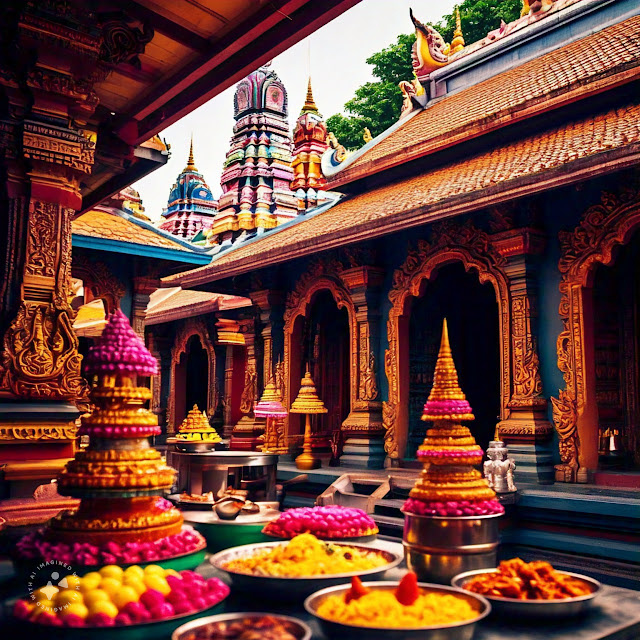प्राचीन भारतीय सभ्यता की महिमा उसकी वैदिक जड़ों में निहित है, जो न केवल भारतीय समाज की बल्कि वैश्विक संस्कृति को भी प्रभावित करने वाली आधारशिला बनी। पी.एन. ओक के ‘विश्व वैदिक विरासत’ में दिए गए मूलभूत तर्कों के अनुसार, वेद मानव सभ्यता के सबसे प्राचीन अभिलेख हैं, जिनमें आध्यात्मिक, भाषाई और वैज्ञानिक प्रगति शामिल हैं, जिन्होंने मानवता के प्रारंभिक उत्कर्ष के लिए ढांचा प्रदान किया।
मानवता के आरंभ से ही, विश्व वैदिक ज्ञान में डूबा हुआ था, इसके सिद्धांतों द्वारा शासित था, और दिव्य भाषा संस्कृत बोलता था। ऋग्वेद के भजन, जो मानव संचार के पहले अभिलेख हैं, आध्यात्मिकता और ब्रह्मांडीय व्यवस्था की एक सार्वभौमिक समझ का विवरण देते हैं। ये भजन केवल प्रार्थनाएँ नहीं बल्कि वैज्ञानिक अवलोकनों, दार्शनिक पूछताछों और नैतिक दिशानिर्देशों के भंडार थे। पी.एन. ओक इस बात पर जोर देते हैं कि संस्कृत, जिसे सभी भाषाओं की जननी के रूप में वर्णित किया गया है, आधुनिक भाषाओं में भी व्याप्त है, जो वैश्विक भाषाओं में अनगिनत शब्दों के लिए व्युत्पत्ति संबंधी जड़ें प्रदान करती है। यह भाषाई सार्वभौमिकता इस दावे को रेखांकित करती है कि वैदिक सभ्यता ने एक समय में विश्व को एक ही सांस्कृतिक और बौद्धिक छत्र के नीचे एकजुट किया था।
महाभारत, इस युग से उत्पन्न होने वाले सबसे महत्वपूर्ण महाकाव्यों में से एक, को एक ऐतिहासिक मोड़ के रूप में चित्रित किया गया है। ओक के अनुसार, इस विनाशकारी घटना ने सामंजस्यपूर्ण वैदिक विश्व को खंडित सभ्यताओं में तोड़ दिया। इसके बाद क्षेत्रीय संस्कृतियों- बेबीलोनिया, मिस्र, सीरिया और असीरिया का उदय हुआ- जिनमें से प्रत्येक वैदिक विश्व की खंडित स्मृतियाँ लिए हुए थी। इन क्षेत्रों में वास्तुशिल्प, कलात्मक और सामाजिक विकास उनकी साझा वैदिक विरासत के निशान दर्शाते हैं। उदाहरण के लिए, ओक मंदिर संरचनाओं और पवित्र ज्यामितियों जैसी वास्तुशिल्प समानताएँ बताते हैं जो वैदिक विज्ञान से उत्पन्न हुई थीं।
इस युग की चिकित्सा और विज्ञान का भी एक सार्वभौमिक मूल्य है। आयुर्वेद, जिसे व्यापक रूप से विश्व की सबसे प्रारंभिक स्वास्थ्य सेवा प्रणाली माना जाता है, वैदिक ग्रंथों पर आधारित है जिन्होंने शरीर रचना विज्ञान, शरीर क्रिया विज्ञान और प्राकृतिक चिकित्सा में उन्नत अंतर्दृष्टि प्रदान की। यजुर्वेद और अथर्ववेद में वर्णित इंजीनियरिंग के चमत्कार धातु विज्ञान, ब्रह्मांड विज्ञान और शहरी नियोजन की गहरी समझ प्रकट करते हैं। गणित में वैदिक योगदान, विशेष रूप से शून्य और दशमलव प्रणाली की शुरुआत ने वैश्विक वैज्ञानिक चिंतन को नया रूप दिया। ऐसी प्रगति इस कथन को पुष्ट करती है कि वैदिक संस्कृति में निहित प्राचीन भारतीय सभ्यता न केवल अपने दायरे में व्यापक थी बल्कि अपने प्रभाव में वैश्विक भी थी।
महाभारत के बाद इस एकीकृत सभ्यता के विघटन से स्थानीय प्रथाएँ हुईं और वेदों की मूल सार्वभौमिक दृष्टि कमजोर हुई। पी.एन. ओक इस प्राचीन विरासत की बहाली का आह्वान करते हैं, एक "विश्व वैदिक विरासत विश्वविद्यालय" की वकालत करते हैं ताकि उन वैदिक सिद्धांतों को संरक्षित, शोध और प्रसारित किया जा सके जिन्होंने एक समय में मानवता को एकजुट किया था। उनका तर्क है कि इन प्राचीन सिद्धांतों की ओर वापसी आधुनिक चुनौतियों के समाधान पेश कर सकती है- चाहे वे राजनीतिक विभाजन, पर्यावरण क्षरण या सांस्कृतिक अलगाव से संबंधित हों।
वैदिक संस्कृति ने सार्वभौमिक शांति, नैतिक जीवन और ब्रह्मांड के प्रति एक सामूहिक जिम्मेदारी पर भी जोर दिया। इसने विभाजनकारी विचारधाराओं को खारिज कर दिया और पशु और वनस्पति जगत सहित सभी प्राणियों के बीच एक सामंजस्यपूर्ण सहअस्तित्व स्थापित करने की मांग की। "वसुधैव कुटुम्बकम्" ("विश्व एक परिवार है") के मार्गदर्शक सिद्धांत ने प्राचीन भारतीय विचार के सार का प्रतीक बनाया। ओक का कहना है कि ऐसा विश्वदृष्टिकोण न केवल ऐतिहासिक रूप से प्रासंगिक है बल्कि मानवता के भविष्य के लिए भी अनिवार्य है।
निष्कर्ष में, प्राचीन भारत की वैदिक विरासत ने एक ऐसी सभ्यता को आकार दिया जिसने विश्व को न केवल सांस्कृतिक और भाषाई एकता का खाका पेश किया बल्कि ऐसी बुद्धिमत्ता भी प्रदान की जो समकालीन वैश्विक आवश्यकताओं के साथ प्रतिध्वनित होती है। इस ज्ञान की बहाली के माध्यम से, पी.एन. ओक एक सार्वभौमिक सभ्यता के पुनरुद्धार की कल्पना करते हैं- सामंजस्यपूर्ण, प्रगतिशील और कालातीत वैदिक सिद्धांतों में गहराई से निहित।





.jpeg)
.jpeg)

.jpeg)
.jpeg)
.jpeg)



.jpeg)


.jpg)
